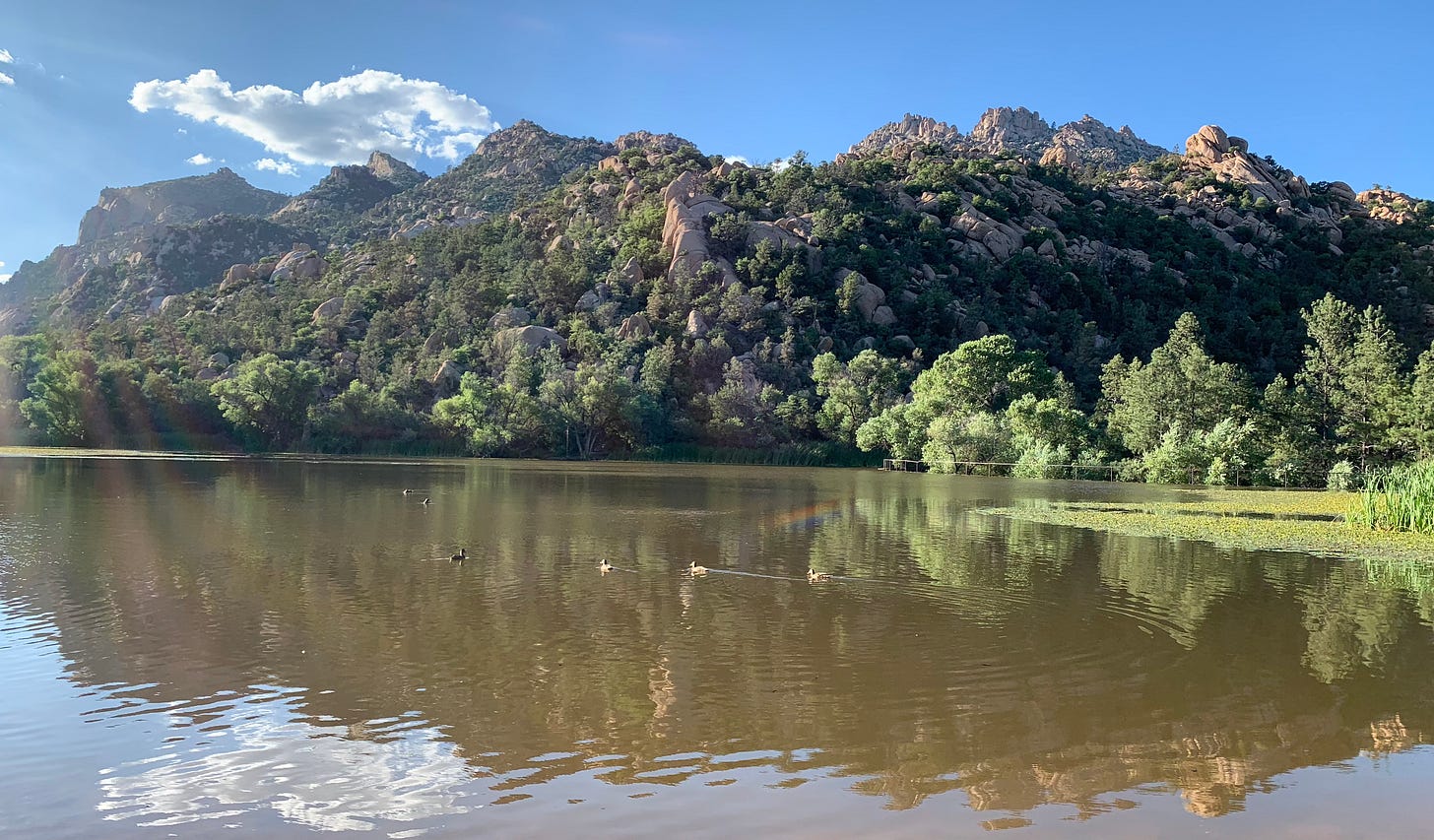
Between 1974 and 2010, Prescott College professor Carl Tomoff observed 366 bird species within a ten mile radius of Prescott’s downtown courthouse. This is well over half of all the bird species found in Arizona. In fact, it’s one third of the bird species found in the entire United States.
But this remarkable avian diversity wasn’t always so.
This is a testament to the diversity of habitats found within the Prescott area. Mixed conifer forests, ponderosa pine forests, pinyon-juniper woodlands, interior chaparral, semi-desert grasslands, and riparian woodlands all converge on this town, and on this ecoregion, the Mogollon Highlands, at large. Most bird species are adapted to thrive in a very specific habitat, and so a wide variety of habitats brings with it greater avian biodiversity. But one vital habitat type in Prescott is less than a century old — our lakes.
There were no standing bodies of water on this land when the town of Prescott was established here in 1864 as the first capital of the Arizona Territory. The local sources of water which supported riparian woodlands were the intermittently flowing Granite Creek, Lynx Creek, and Hassayampa River. But today, if you look at the map of Prescott on eBird, the most species-rich hotspots are Watson Lake, Willow Lake, Granite Basin Lake, Lynx Lake, and Goldwater Lakes respectively. These are our five major man-made reservoirs, whose dams were constructed between the 1920s and 1960s. Prescott's many reservoirs are not only hotspots for human recreation and focal points of our extensive trail system – they are our most biodiverse habitats when it comes to birds.
Since the construction of these reservoirs, Prescott has become a stopover point for countless species of migratory birds — from gulls to sandpipers, from pelicans to cranes. It is also a wintering location for many waterfowl which breed further north – a spectacular array of duck, geese, and swan species congregate on our snow-dusted lakes.
Although there was no eBird in 1864, we can be certain that Prescott in those days did not have the breeding colonies of Great Blue Herons and Double Crested Cormorants which I watched throughout the past spring. Many of the species which breed in Prescott today require a permanent standing body of water that doesn’t dry up in the summer droughts, for nesting and for feeding. Our reservoirs stocked with fish provide a steady food source for pescatarian birds like herons and cormorants, which would have been very hard to come by in this area before.
Standing bodies of water are also magnets for insects and other invertebrates, many of whom must lay their eggs in water. These insects then become a feast for our numerous species of flycatchers, swallows, warblers, and more. Even hummingbirds can be seen snatching morsels out of the buggy air that borders these reservoirs.
Birds’ current heyday in the Prescott area is a testament to the interconnected fates of human and avian society. Our rapid development on this continent has come at enormous costs to native wildlife, but it also can, and should, be done in ways that enhance biodiversity. Will the people of Prescott continue to uplift our feathered friends alongside us, or will we let them fall to the wayside in favor of ever-larger housing developments? Remarkable swaths of Prescott’s Granite Dells, which contain Watson and Willow Lake, have only resisted the economic pressures to be turned to subdivisions thanks to the tireless advocacy of the nonprofit Granite Dells Preservation Foundation and the political action committee Save the Dells.
The cottonwood-willow riparian woodlands which line our creeks and many of our lakes is a critically endangered ecosystem in the Southwest. Arizona Game and Fish estimates that 80% of wildlife in our state depend on these scant riparian areas as breeding grounds, migration corridors, and foraging sites at some point throughout the year, but they are rapidly disappearing in the face of drought, development, livestock grazing, and climate change.
The lush riparian area supported by Granite Creek northeast of Prescott was largely destroyed throughout the 20th century by unchecked sand and gravel extraction, firewood harvesting, and cattle grazing. Watson Woods Riparian Preserve, directly adjacent to Watson Lake, was established by the nonprofit Prescott Creeks in 1995 to preserve the 128 acres that remained of what was once more than 1,000 acres of riparian woodland.
In the past 30 years, this land, which is leased by the City of Prescott to Prescott Creeks, has made a remarkable recovery. Its enormous cottonwoods, some with trunks 10 feet in diameter, provide ample, extensive nesting and foraging opportunities for birds. Today, Watson Woods Preserve boasts the richest birding in the city and among the richest in the entire state, with a whopping 285 documented bird species on eBird.
The summer months are a time of relatively low bird diversity in Prescott – transient migrants and wintering birds are where we rack up a lot of our numbers – but it’s a delightful time to get to know our resident breeding birds well and watch them go through great summer changes – nesting, fledging, and molting.
Watson Woods is a breeding bird hotspot, and I have walked certain paths there so many times this summer, I can predict what birds I will see at every bend in the trail. Allow me to share with you some of the bird families for whom I’ve developed a particular fondness.
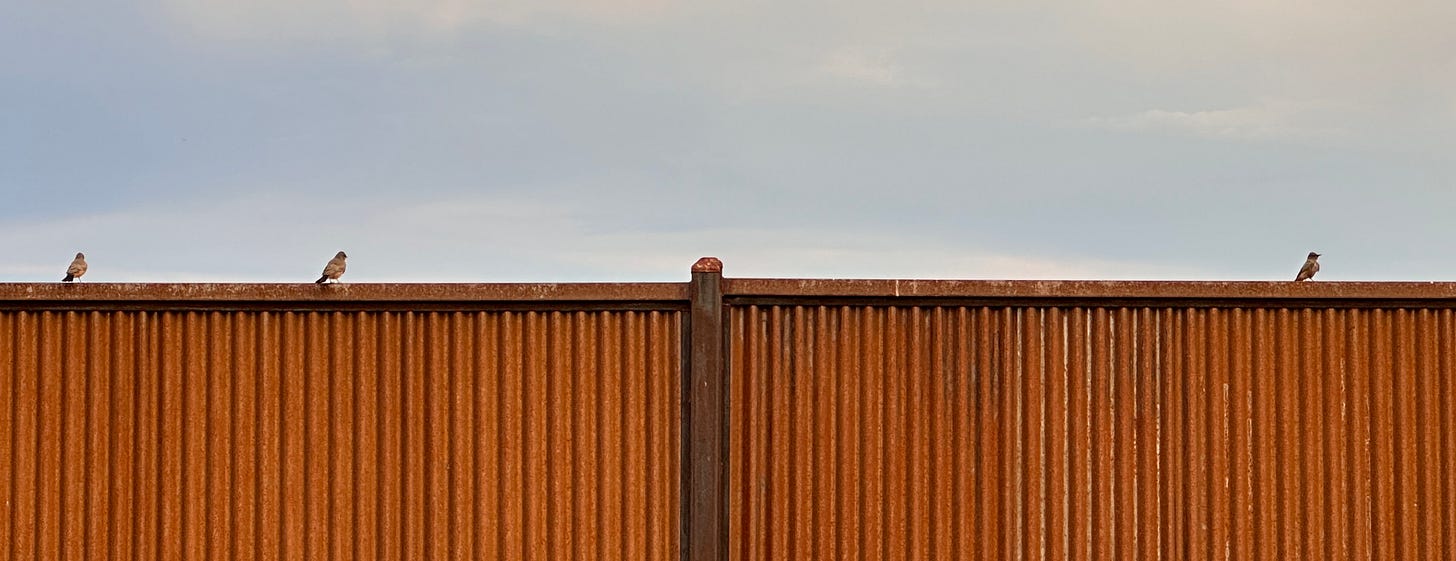
I always begin at the Peavine Trail parking lot because there’s a pair of Say’s Phoebes who I invariably find on the same stretch of sidewalk, doing as flycatchers do – perching on the fence or on the stems of sturdy wildflowers to sally to and fro, catching aerial insects with precision and returning to their perch to nosh on them.
Many weeks ago, I found the phoebes' nest among several others in apparent disuse in the eaves of the bathhouse. I caught one of the phoebes tending to it, but it was too high up for me to see the eggs. I’d stop and listen every visit, but I never heard any nestlings crying out, never saw their hungry, gaping mouths. I was beginning to wonder if the couple had failed to breed this year.
Until I finally saw the fledglings last week! I first noticed mom on her stately fence perch, and I admired her salmon-colored belly as she sallied out to catch an insect. But once she had her prey, she flew into a nearby tree, towards two other birds I hadn’t noticed, who cried out at her approach. Only a few feet off the ground, I watched her feed her prey to two perfect fledglings, who look indistinguishable from adults now save the remnants of gape flange at the corners of their beaks – that bright flesh lining a baby bird’s mouth that helps them stand out to their parents. The two fledglings were pressed up against each other like they were huddling for warmth even though it was 90 degrees. Or like they were two drunkards somehow both using each other for stability. Heart-meltingly precious. But their cutesy act is wearing thin for mama bird who has spent months building their nest, incubating them, and rearing them from naked, helpless nestlings into self-sufficient juveniles. When they join her on the fence to keep begging, she hops away from them, as if to say, get a job already.
Granite Creek is not a-flowing as it was in late spring, but neither is it bone dry, thanks to the periodic monsoon showers over the past few weeks. It’s a series of puddles, and like some unequivocal law of nature, every puddle has exactly one Black Phoebe at its edge, another common and blissfully easy-to-identify flycatcher with a dusky black body that starkly contrasts with its white belly. These little ponds surrounded by muck are perfect spots for insects to lay their eggs and proliferate, and a Black Phoebe is always there, ready to snatch tasty morsels out of the air or off the water’s surface. These birds build the foundation of their nests out of the same mud from which their invertebrate diets spawn.
The mostly dry creek bed is a wonderful place to spend time on hot summer days, because it's shaded by a canopy of mature trees all leaning in towards the water. Two Cooper’s Hawks who live in Watson Woods, a father and his fledgling, feel the same way – I see them high up in the willows along this creek, keeping a watchful eye out for opportunities to pick off a smaller bird.
I have found the petite father – male Cooper’s Hawks are significantly smaller than females – in plain view on a utility pole and totally concealed in the willow canopy, perched so stock-still I didn’t see him when I was looking directly at him. I just happened upon him when I began idly scanning with my binoculars. The hawks don’t seem to alarm the Phoebes feeding in the murky pools, who are significantly smaller than their preferred prey – doves, pigeons, jays, robins, and the like.
The fledgling is the same size as the father, even a bit larger, but with a brown back and streaky chest, as opposed to the adult’s bluish-gray back and reddish barred chest. I have never seen them interact, but I have seen them coexist in close proximity. They must be father and child, for a Cooper’s Hawk’s typical territory is several times the size of all of Watson Woods, and no adult male would allow an interloping juvenile onto their turf unless he was his own child still in need of looking after.
Summer tanagers skulk in the cottonwoods. The strawberry red males and mustard yellow females pip back and forth to each other. I see a scruffy male whose head feathers are so disheveled he appears to have a crest – this time of year, it’s hard to tell the difference between a shabby juvenile who doesn’t have his act together yet, and an adult going through their annual feather molt. Feathers are made of dead cells, just like our hair and our fingernails, but they do not grow continuously. Once or twice a year, birds replace their worn-out feathers in rapid succession, and this process is called molting. Molting also happens early in a bird’s life when they shed their downy nestling feathers and exchange them for the sturdier contour feathers of subadult and eventually adult plumage.
In another stagnant pool shaded by a cottonwood gallery, whose surface is coated in a green algal sheen, robins invariably greet me, a mother and her awkward juvenile, trolling for worms and other creepy-crawlies in the muddy banks. Their rufous barrel chests are proud and their white-ringed eyes almost unnervingly perceptive. They are vigilant yet strangely trusting birds, the robins – sometimes a robin lets me walk right up to it.
Then, when I reach Watson Lake itself, I scan the water for grebes. Dear God, the pied-billed grebes. They are world’s cutest waterbird with silhouettes that look like legit rubber duckies. On the hottest days, when even the mallards and the Canada Geese have fled to the shade beneath trees, the grebes take to open water, diving far into the cool depths to catch fish, crawdads, and other delicacies. They let loose their whomping songs and cackling calls that ricochet across the water.
It is a dream of mine to see one of their nests one day – they are floating baskets woven of reeds, balanced on a lily pad or buoyed by cattail stems, concealed deep in the sedges. It brings me the most profound joy to watch a mother with her three chicks on Watson, their zebra-striped faces even more striking than her own. Grebes, like most waterfowl, have precocial chicks, who are ready to leave the nest within a day of hatching. It takes them a few weeks to learn how to swim, and they sleep and ride around on their parent’s backs until they’re ready. They have these insanely huge, lobed feet set so far back on their body they can’t even walk on land. Like loons, their feet work as propellers, allowing them to dive quickly and deeply to catch aquatic prey.
These are just a few of the birds who make Watson Woods their home for breeding, nesting, rearing their young, and bearing the changes of the molt. At the same time, they make this preserve a very special place for birders. I’m happy that they, like me, have found Prescott to be a place that fulfills their needs — they are one of the reasons why Prescott fulfills my needs for connection to nature.
These birds’ choices to inhabit man-made wetlands enhanced by the careful restoration work of Prescott Creeks is an uplifting reminder that human society need not be simply a plague on native wildlife – we can grow in ways that are mutually beneficial and uplift the birds with us. Hikers, mountain bikers, trail runners, and birdwatchers alike now enjoy this lush and shady haven where butterflies flit, wildflowers bloom, gophers dig, and birds court each other, bringing new life into the world with every passing season.
What do the “birdiest” areas where you live look like? You can explore verified birding hotspots near you on eBird. Let me know in the comments. And as always, thanks for keeping an eye on things with me.


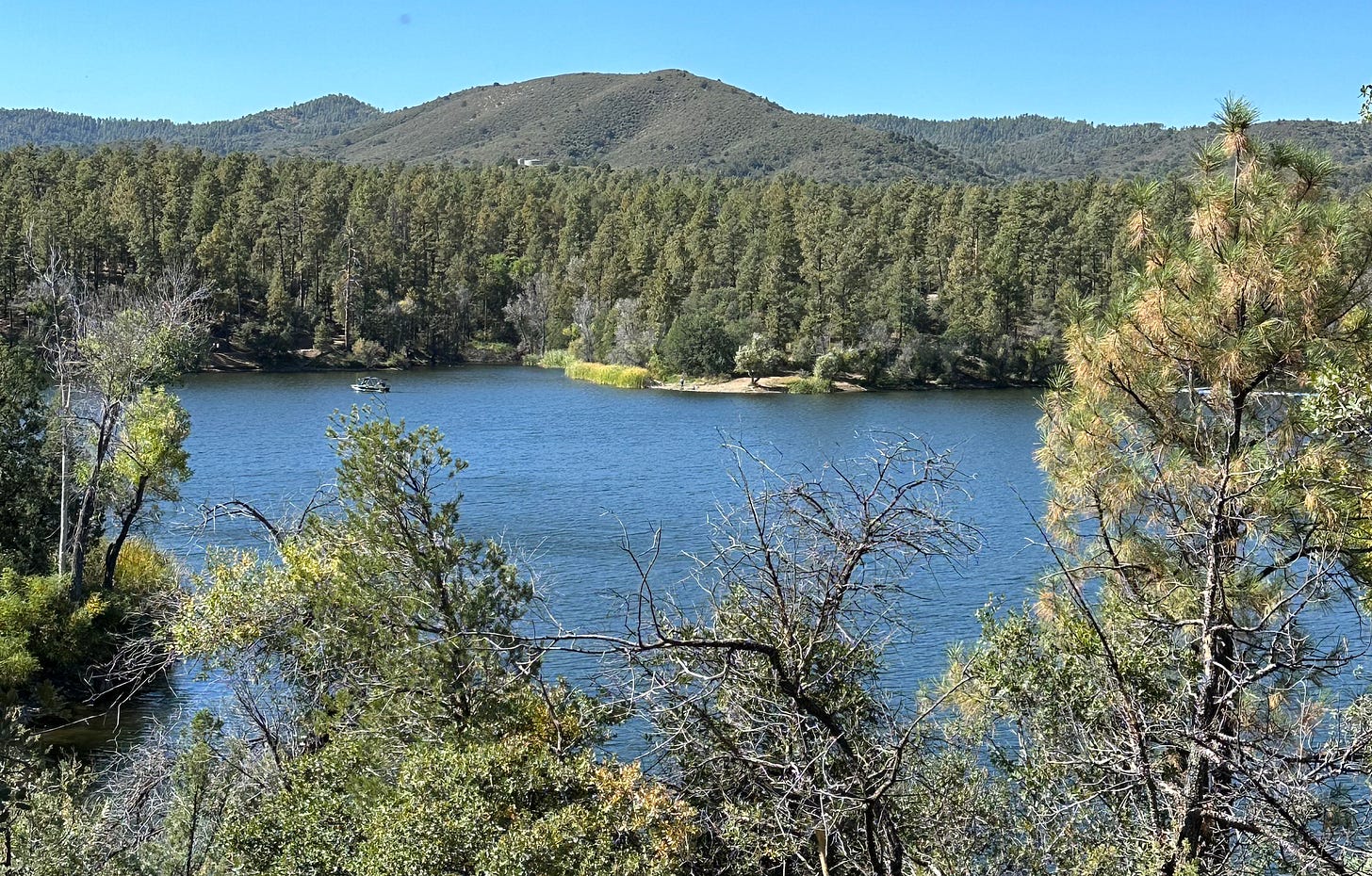


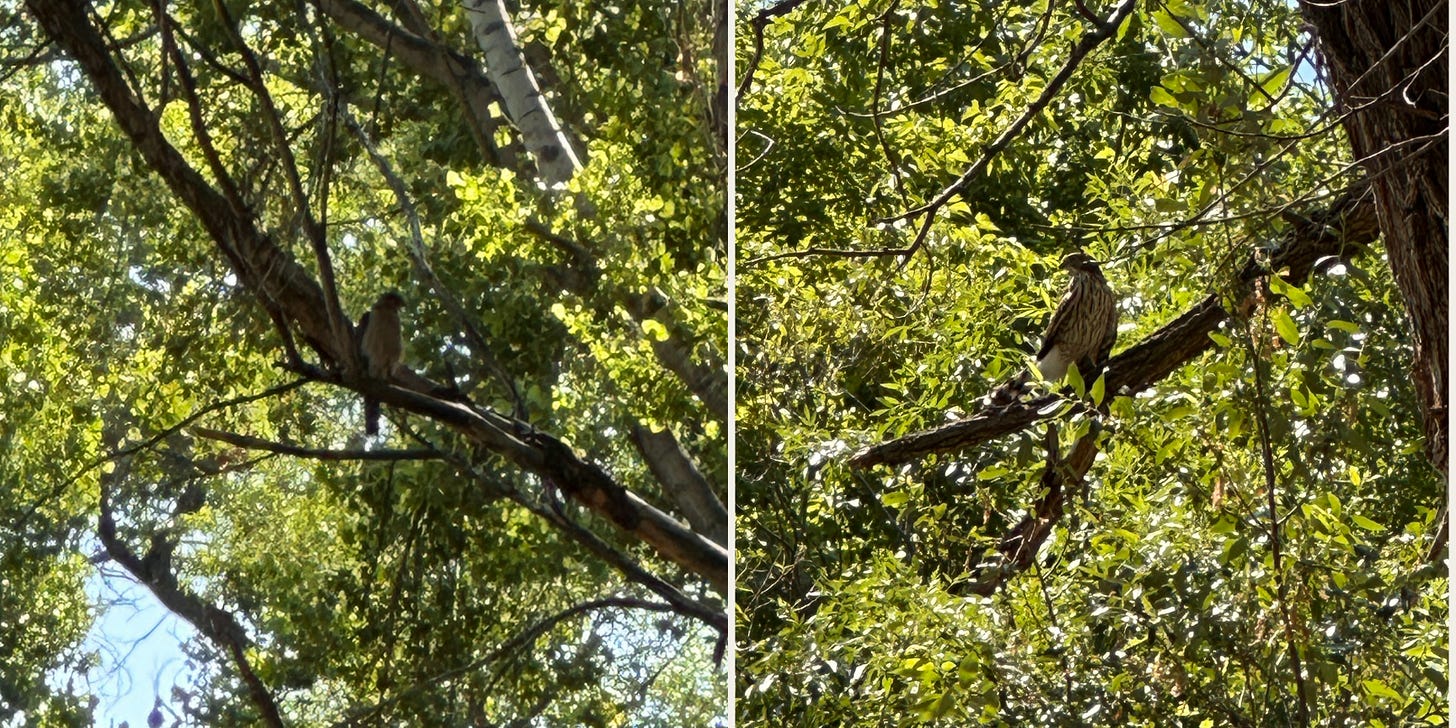
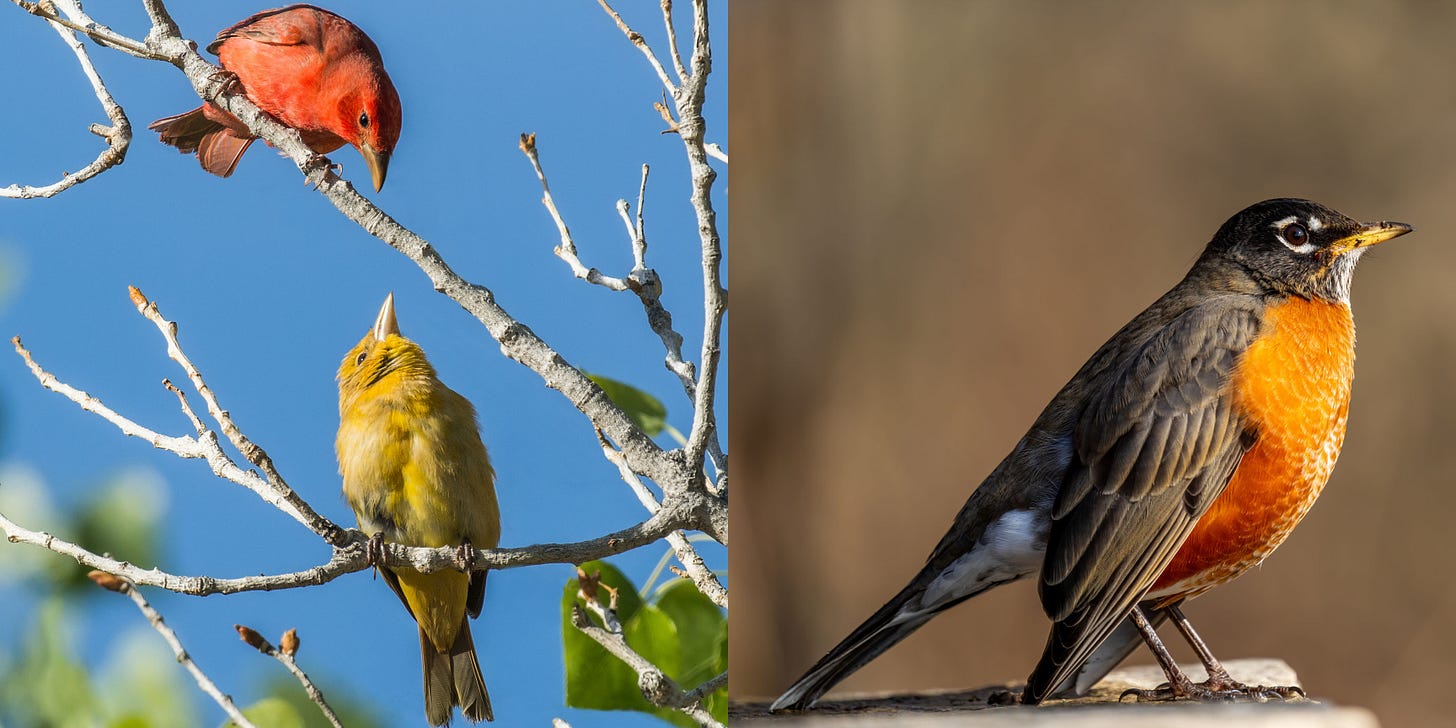

Hi Carly I really enjoy all of your articles and I'm enjoying watching the birds in our back yard. The Indigo Bunting you saw when you were here is still coming to feed. It is such a beautiful little bird. I hope you have fun in Florida and see lots of different birds while you’re there.
Hey Carly it aunt Jeannie and agin I really enjoyed reading your article.I love watching the birds around here and often go to the lake or small pond near me just to get away from the house and all the crazyness and just sit and watch the birds.I especially like watching the herons catching and eating small fish.Keep up your good work and I look forward to your next adventure.